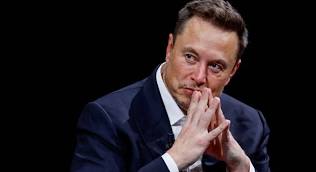Welcome to our blog ! Here you will find news and updates about sports, politics, artists, and everything that is trending right now. Enjoy the content and stay up to date with the latest trends! Stay Informed with BoomViral News.
"Tesla Revenue Dips, But Musk Projects Comeback With AI and Self-Driving Tech"
Suraay
7/24/20253 min read


Tesla’s Q2 2025 Earnings Report: Current Challenges vs. Betting on the Future of AI and Robotaxis
Tesla’s Q2 2025 earnings report presented a mixed picture for investors: declining automotive revenue, shrinking profit margins, and regulatory pressures. However, beneath these challenges lies a bold strategic shift toward artificial intelligence and robotaxi services, raising key questions about whether this pivot can justify long-term investment. For investors, the challenge lies in balancing Tesla’s near-term struggles with the transformative potential of its autonomous mobility and robotics initiatives.
Automotive Performance: A Weakening Foundation
In Q2 2025, Tesla reported a 12% year-over-year revenue drop to $22.496 billion, with earnings per share (EPS) falling 23% to $0.40. Operating income plunged 42%, and regulatory credits—once a key profit driver—declined from $890 million in Q2 2024 to $439 million. This drop is tied to the Republican-passed "One Big Beautiful Bill" (OBBB), which eliminated penalties for automakers failing to meet emissions standards, effectively killing Tesla’s credit revenue stream. Analysts project a 75% decline by 2026, with credits disappearing entirely by 2027.
Additionally, vehicle deliveries fell 13.5% year-over-year to 384,122 units, driven by weak demand in key markets like Europe and the U.S. The expiration of the $7,500 federal EV tax credit by September 2025 is expected to further pressure sales, especially as Chinese automakers like BYD gain market share.
Regulatory and Competitive Pressures
The OBBB not only hurt Tesla’s regulatory credits but also reduced incentives for EV production, benefiting internal combustion engine (ICE) vehicles. Combined with Tesla’s aggressive price cuts (up to 20% in 2025), this has squeezed profit margins, which fell to 16.5% in Q2—well below the 30% peak in 2022.
Competition is also intensifying: BYD, now the world’s top EV seller, is projected to surpass Tesla in 2025, while legacy automakers like Ford and Volkswagen are accelerating their EV transitions. Tesla’s core automotive business, once a high-margin growth engine, now faces headwinds that could persist for years.
The AI and Robotaxi Pivot: A New Revenue Engine?
In response, Tesla is doubling down on AI and autonomous mobility. Its Full Self-Driving (FSD) software and robotaxi network are no longer just R&D projects—they’re emerging as potential revenue drivers.
In Q2 2025, Tesla launched its robotaxi service in Austin, Texas, charging $6.90 per ride. While still in its early stages, analysts estimate the service could generate $1 billion in 2026 and $75 billion by 2030—equivalent to 45% of Tesla’s projected vehicle revenue. This aligns with Tesla’s vertically integrated strategy, leveraging its existing fleet and AI expertise to build a scalable, high-margin mobility platform.
Meanwhile, the Optimus Gen 3 humanoid robot, designed for mass production, could tap into a $25 trillion global automation market. With 28+ degrees of freedom and advanced sensors, Optimus targets logistics, healthcare, and manufacturing. Even capturing 1% of this market could mean $250 billion in annual revenue by 2030.
Financial Resilience and Strategic Risks
Tesla remains financially strong, with $32 billion in cash reserves and a debt-to-equity ratio of 0.18x. Its R&D investments ($4.54 billion in 2024) underscore its commitment to AI and robotics. However, risks remain:
- Regulatory delays: Robotaxi expansion depends on approvals in key markets like California and Europe.
- Technological hurdles: FSD and Optimus Gen 3 still require refinements for commercial viability.
- Competition: Waymo and Cruise are advancing in autonomous ride-hailing, while legacy automakers partner with AI firms to catch up.
Opportunities and Risks for Investors
Tesla’s AI and robotaxis could offset declining auto sales, but success hinges on scaling and regulatory approvals. Optimus Gen 3 offers another path for revenue diversification.
In the short term, however, volatility is likely, given Tesla’s reliance on speculative AI-driven growth. A balanced strategy—exposure to Tesla’s innovation while hedging near-term risks—may be prudent.
Conclusion: A Calculated Bet on the Future
Q2 earnings highlight the fragility of Tesla’s automotive business, but its AI and robotaxi initiatives present a compelling long-term vision. If successful, these bets could redefine Tesla as a leader in autonomous mobility and robotics, unlocking trillion-dollar valuations. For long-term investors, the key is assessing whether this strategic shift aligns with their risk tolerance and time horizon.
In a world increasingly shaped by AI and automation, Tesla’s bold moves may yet pay off—but patience and a clear-eyed view of the risks are essential.